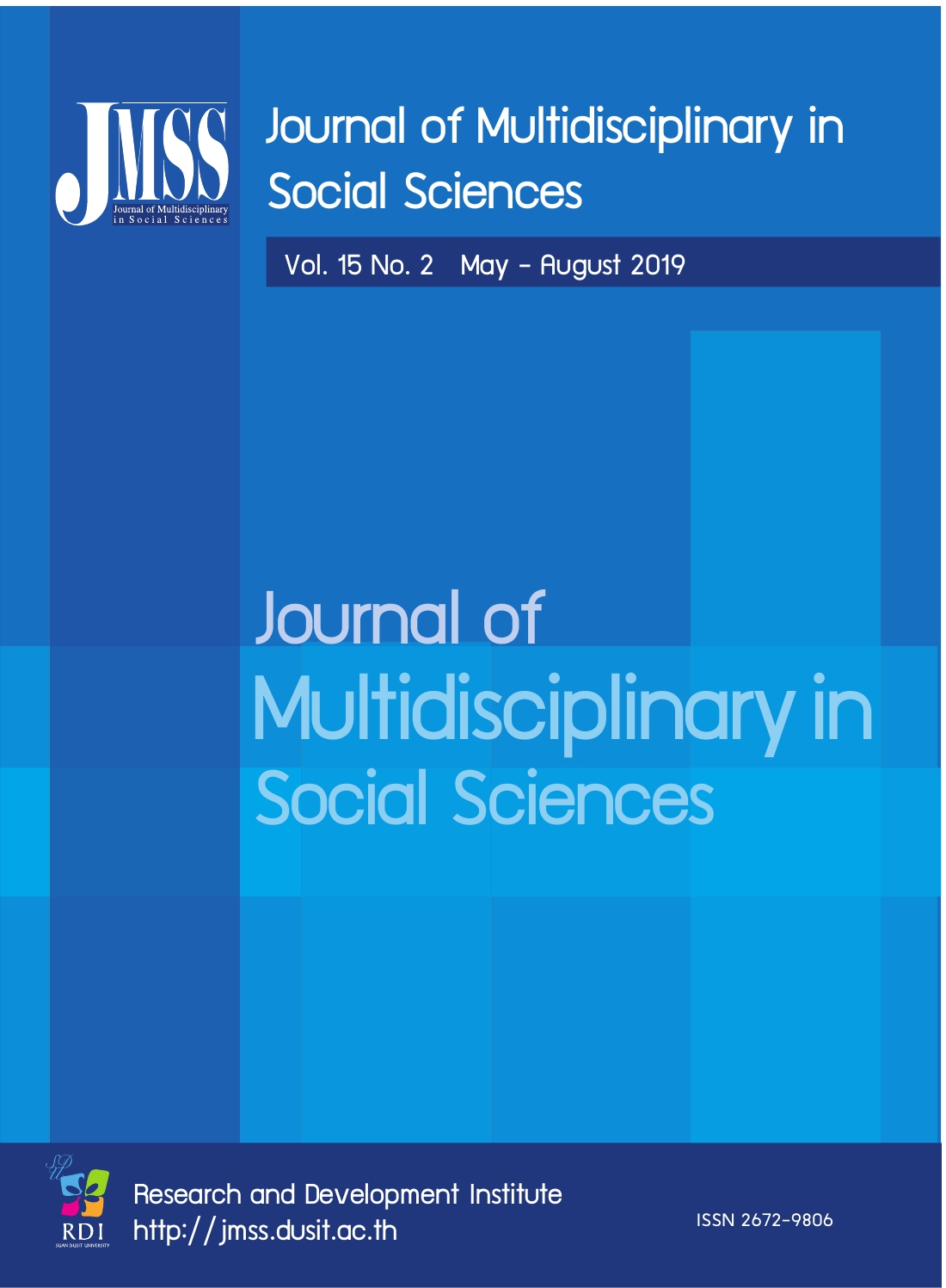The Development of Local Museum Tourism Model for Creative Learning in Kanchanaburi Province
Keywords:
Model Development, Tourism Activities, Local Museum, Kanchanaburi ProvinceAbstract
The objective of this research was to develop a local museum tourism model for creative learning in Kanchanaburi province. The research was undertaken in 2 stages. Stage 1 developed a local museum tourism model by means of documentary study, in-depth interview, focus group discussion with those concerned in local museum tourism, evaluation of tourism site potential, and visualizing the lesson learned from Baan Nhongkhao local museum in Kanchanaburi province, which included 20 key informants. Stage 2 developed local museum tourism activities for creative learning in Kanchanaburi province by means of participatory action research with the Pakpreak community in Kanchanaburi province, which included 22 key informants. A content analysis and analytic induction were employed for data analysis.
Results revealed that the local museum tourism model for creative learning in Kanchanaburi province consisted of these components: 1) experience constructive learning, 2) identity constructive tourism, 3) connection of tourism with the community’s way of life, 4) tourism networking, 5) opening spaces for local museum activities, 6) personnel development for local tourism, and 7) development of tourism products for learning. Local museum tourism activities for creative learning in Kanchanaburi province comprised 1) physical space learning activities for the teaching of architecture of buildings within the area of Pakpreak Road, 2) community’s way of life learning activities as collective learning of the locals and tourists, 3) trade space learning as activities for teaching the history of the trade district , and 4) arts and culture learning activities for arts and culture and creative activities.
References
AAhmad, S., Abbas, M. Y. & Yusof, W. Z. (2013). Museum Learning: Using research as best practice in creating future museum exhibition. Procedia-Social and Behavioral Science, 105, 370-382.
Ahmad, S., Abbas, M. Y. & Yusof, W. Z. (2015). Adapting Museum Visitors as Participants Benefits their Learning Experience?. Procedia-Social and Behavioral Science, 168, 156-170.
Basso, A., Casarin, F. & Funari, S. (2018). How well is the museum performing? A joint use of DEA and BSC to measure the performance of museums. OMEGA, 81, 67-84.
Black, G. (2012). Transforming Museum in the Twenty-First Century. London: Routledge.
Chantaranamchoo, N., Rattanapongpinyo, T. & Ratsasanasart, D. (2014) Developing Strategies for Cultural Tourism Based on Creative Economy of Four Dvaravati Provinces toward ASEAN Community. University of the Thai Chamber of Commerce Journal: Humanities and Social Sciences, 34(4), 1-15.
Colp-Hansbury, C. (2009). Revitalizing a Community: The Potential of the Local Museum in the Public. Arizona State University.
Falk, J. H. (2011). The Learning Tourist: The Role of IdentityRelated Visit Motivations. Tourism in Marine Environment, 3-4(10), 223-232.
International Youth Foundation. (2013). Creating Opportunities for Youth in Hospitality. Baltimore: Hilton Worldwide.
Jamal, T., Taillon, J. & Dredge, D. (2011). Sustainable Tourism Pedagogy and Academic-Community Collaboration: A Progressive Service-Learning Approach. Sage Journals, 11(2), 133-147.
Kanchanaburi Provincial Office Tourism and Sports. (2013). Tourism Strategic Plan of Kanchanaburi Province Year 2013. Kanchanaburi: Kanchanaburi Provincial Office Tourism and Sports.
Kemp, S. (2017). Design museum future: Catalysts for Education. Future, 94, 59-75.
Ministry of Tourism & Sports. (2016). Situation of International Tourist Year 2005-2015. Bangkok: Ministry of Tourism & Sports.
National Statistical Office. (2016). Domestic Tourism Conclusion in Kanchanaburi Province Year 2009-2015. Bangkok: National Statistical Office.
Okazaki, E. (2008). A Community-Based Tourism Model: Its Conception and Use. Journal of Sustainable Tourism, 16(5), 511-529.
Richards, G. & Raymond, C. (2000). Creative tourism. ATLAS NEWS. 23, 16-20
Ritchie, B. W. (2003). Managing Educational Tourism. Clevedon: Channel View Publications.
UNESCO. (2006). Towards Sustainable Strategies for Creative Tourism. New Mexico: Santa Fe.
Winkle, C. M. & Lagay, K. (2012). Learning During Tourism: The Experience of Learning From The Tourist's Perspective. Journal Studies in Continuing Education, 34(3), 339-355.
Downloads
Published
How to Cite
Issue
Section
License

This work is licensed under a Creative Commons Attribution-NonCommercial-NoDerivatives 4.0 International License.








